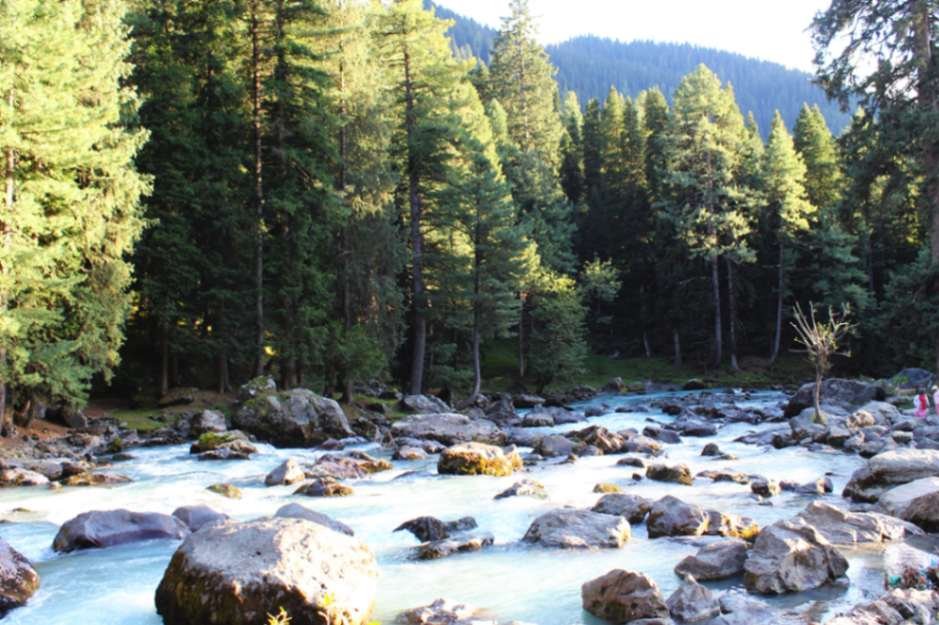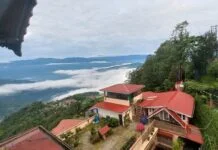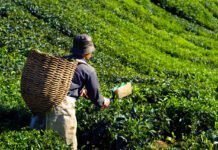Introduction
Jammu and Kashmir, often referred to as “Heaven on Earth”, is known for its breathtaking natural beauty and diverse landscapes. Here are some sightseeing and tourist places in Jammu and Kashmir:
Destinations to see in Jammu and Kashmir
Srinagar: The summer capital of Jammu and Kashmir, Srinagar is famous for its stunning Dal Lake, where you can go on shikara yatras and stay on houseboats. Mughal Gardens, Nishat Bagh, Shalimar Bagh and the historic Jame Masjid are some of the must-see places in the city.
Jammu: The winter capital of the state, Jammu boasts of historical and religious significance. Vaishno Devi Temple, Raghunath Temple and Bahu Durg are some of the places to visit.
Gulmarg: Also referred to as the “meadow of flowers,” Gulmarg is a well-liked hill town and a top skiing location. Gulmarg Gondola, one of the highest cable cars in the world, offers panoramic views of the Himalayas.
Sonmarg: Known as the “Meadows of Gold”, Sonmarg is a haven for trekkers and adventure enthusiasts. Thajiwas Glacier and Joji La Pass are popular attractions here.
Pahalgam: This picturesque town is the gateway to Amarnath Yatra and a great place for nature lovers. It is surrounded by green meadows, Lidar River and offers trekking and horse riding opportunities.
“From Leh to Heaven: Unveiling the Mystical Beauty of Jammu and Kashmir 🌄”
Leh-Ladakh: The northernmost part of the state, Ladakh is famous for its rugged landscape, high mountain passes and unique culture. Visit places like Leh, Nubra Valley, Pangong Lake and So Moriri Lake.
Kupwara: Located in the northwestern region of Kashmir, Kupwara is known for its serene landscape, pristine lakes and trekking trails. The Lolab valley and the high-altitude Shamsbari range are worth exploring.
Dachigam National Park: Located near Srinagar, this national park is home to the endangered Hangul deer.For those who enjoy the outdoors and wildlife, it is a wonderful location.
Hemis: Famous for the annual Hemis festival, this village houses the Hemis monastery, one of the richest and most famous in Ladakh.
Zanskar Valley: Known for its remote and rugged terrain, Zanskar Valley is a trekker’s paradise. The frozen Zanskar River offers a unique winter trekking experience known as Chadar Trek.
Gurez Valley: This hidden gem of North Kashmir is known for its stunning scenery including Kishanganga River and Habba Khatun Peak.
Aharbal Falls: Located in Kulgam district, Aharbal Falls is often called the “Niagara Falls of Kashmir” and is a great spot for picnics and nature walks.
Betab Valley: Named after the Bollywood movie “Betaab”, this valley in Pahalgam is known for its green, crystal-clear streams and breathtaking scenery.
Dudhpathri: Known as the “valley of milk”, Dudhpathri is a tranquil meadow surrounded by thick forests, making it an ideal spot for a day picnic.
Mansar Lake: Located near Jammu, this lake is surrounded by temples and considered sacred. Here, picnics and boating are common pastimes.
These are just a few of the many sightseeing and tourist places in Jammu and Kashmir. The region’s natural beauty, rich culture and warm hospitality make it a must-see destination for travelers.
Getting To Jammu and Kashmir
There are various transport options to get to Jammu and Kashmir depending on your starting point and preferences. Here are some common ways to reach this beautiful region:
Skyway: Srinagar International Airport Srinagar is the largest city in Jammu and Kashmir and has an international airport. You can book direct flights to Srinagar from kolkata,Delhi, Mumbai, Bangalore, and other major Indian cities.
Leh Kushok Bakula Rimpochi Airport: If you plan to visit Ladakh, Leh’s airport is well connected to cities like Delhi, Chandigarh and Srinagar.
On the train: Jammu Tawi Railway Station: Jammu serves as a major railway station for the region. You can travel to Jammu by train from various parts of India including Kolkata,Delhi, Mumbai and Amritsar. From Jammu, you can continue your journey by road to other destinations in Jammu and Kashmir.
By Road: “National Highways” Jammu and Kashmir is accessible by road through various national highways. The most common routes are NH1A (Srinagar to Jammu), NH1D (Leh to Srinagar), and NH44 (Jammu to Srinagar).
Bus Services: There are regular bus services, both public and private, that connect the major cities of North India such as Delhi, Chandigarh and Amritsar with Jammu and Srinagar.
By Bike or Car: Many adventure enthusiasts prefer to bike or drive in Jammu and Kashmir. However, please note that some areas like Ladakh may require special permits for non-resident vehicles, so check the regulations and road conditions before embarking on such a journey.
By trekking: For the adventurous, there are routes from neighboring regions like Himachal Pradesh and Uttarakhand to Jammu and Kashmir. The most famous of these is the Manali to Leh highway, which opens during the summer months.
By bus and shared taxi: Once you reach Jammu or Srinagar, you can use local buses, shared taxis or private cabs to travel within the region. Shared taxis are a common mode of transport from Srinagar to reach destinations like Gulmarg, Pahalgam & Sonmarg.
Helicopter Services: In some cases, helicopter services are available for quick access to places like Vaishno Devi Temple and Amarnath Caves during the respective pilgrim seasons.
When planning your trip to Jammu and Kashmir, it’s important to check weather conditions, road closures and travel advisories, especially if you’re visiting during the winter months when some high-altitude areas can be inaccessible. Additionally, keep in mind that some regions, such as Ladakh, may require permits for tourists, which you should obtain in advance.
Traditional clothes of Jammu and Kashmir
The traditional costumes of Jammu and Kashmir reflect the region’s rich cultural diversity, with different ethnic communities having their own distinct costumes. Here are some traditional dresses commonly worn in Jammu and Kashmir:
Phiran (Phiran), Poot and Churidar Pajama, Kangri and Phiran, for Men, Jamawar Shawl, Kashmiri Saree, Phiran and Pashmina Shawl for Women, Kurta and Salwar Kameez, Pagri (Turban), Traditional Jewelry,
Return (Return): Phiran is the most iconic traditional dress of Kashmir. It is a long, loose and flowing robe, often made of fur, and serves as both a top and outer garment. It is commonly worn by both men and women, especially during the cold winter months, and provides warmth and comfort.
Putt and churidar pajama: Puts are wide leg pants, and churidar pajama tight fitting trousers. These are usually worn by Kashmiri men under their pirans. They are usually made of cotton or silk and are comfortable for everyday wear.
Kangri and Feran for Men: In extremely cold weather, Kashmiri men often wear a kangri, a traditional fire pot covered with cane. They keep it inside their furan to keep warm. This combination symbolizes the winter culture of Kashmir.
Jamawar Shawl: Jamawar shawls are highly valued and intricately woven shawls. These luxurious shawls are worn by both men and women on special occasions and are known for their vibrant colors and delicate designs.
Kashmiri Sarees: The traditional dress of Kashmiri women consists of a sari, usually made of silk, and a blouse. The saree is draped in a unique style called “Kashmiri drape”, which covers the head and falls beautifully.
Feran and Pashmina Shawls for Women: Kashmiri women also wear firans, often paired with pashmina shawls. These shawls are famous for their softness and warmth, which makes them a symbol of luxury.
Kurta and Salwar Kameez: In parts of Jammu and Kashmir, women prefer to wear kurtas (tunic tops) with salwar (loose-fitting pants) or churidars (tight-fitting pants). This dress is more common in the plains of Jammu.
Turban (turban): In some communities, especially among Sikh and Muslim men, the turban is an integral part of traditional dress. The type and color of the turban can vary based on religious and cultural affiliations.
Traditional Jewelry: Both men and women of Jammu and Kashmir adorn themselves with traditional jewelry. These include necklaces, earrings, bangles and rings, often made of silver and sometimes studded with semi-precious stones.
kalimpong-places to visit in kalimpong
Tinchuley-Offbeat Darjeeling-tinchuley homestay-Darjeeling, India
chatakpur darjeeling-chatakpur homestay-Offbeat Darjeeling
Offbeat Darjeeling-Lepchajagat-A paradise in the hills of Darjeeling, India
places to visit in Gulmarg-Gulmarg Gondola
Srinagar-places to visit in Srinagar-Best months to visit Srinagar India
little Singamari Homestay-Singamari-Darjeeling
Offbeat Darjeeling-Mirik The Beautiful Place Of Darjeeling
Offbeat Darjeeling-Little Rangeet River-Places To Visit In Darjeeling
Offbeat Darjeeling-bijanbari homestay-The beauty of Bijanbari
Offbeat Darjeeling-Sittong-Ahaldara-Places To Visit In Darjeeling
Places To Visit In Darjeeling-3 Point-triveni Darjeeling
Top 5 Places To Visit In Darjeeling-Darjeeling Weather
Places to visit in Darjeeling. (9) popular sites,and Darjeeling temperature
tourist places of jammu and kashmir
south sikkim tourist spots: captivating scenery is a photographer’s dream.
west sikkim tourist spots: Pelling best 13 place.
Know 18 Best Places in North Sikkim Gangtok to Chungthang
Nathula pass from gangtok, 7 more popular places in east Sikkim
Facts you didn’t know about Sikkim
Darjeeling Tour Packages: A Visual Journey Through the Picturesque Beauty of India’s Gem








